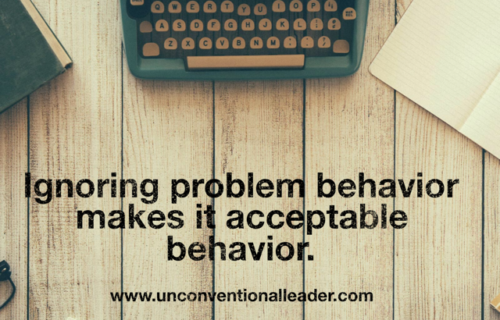How To Manage the Remote Employee
 I had worked tirelessly on my end of the month report to let my boss know what I had done. I didn’t see him except for once or twice a year so I figured that he really needed to know what I was doing and how well I was doing it. I smugly sat back after I attached the file and hit the send button on my email. I knew that I was probably going to get a call commending me on what a great report I had done and how much he appreciated me being on the team. These were the thoughts that were going through my head as I sat there waiting, patiently for the phone to ring. One hour passed…nothing. Two hours…nothing. The day passed…nothing. After working hours were over, all I could figure from my lack of feed back was that he was (more than likely) showing it to everyone and asking their advice on how he could clone me and my awesomeness. The next day, week and month passed and I still heard nothing. I chalked it up to his being busy and that did not deter me from submitting an equally magnificent report at the end of the next month. Oddly, the same scenario prevailed. I expected a ticker tape parade and got a goose egg. To check to see if he even read my reports, the next month I submitted the same report as the month before and, yes, I got nothing. That was the report I submitted for the next two years (without any edits).
I had worked tirelessly on my end of the month report to let my boss know what I had done. I didn’t see him except for once or twice a year so I figured that he really needed to know what I was doing and how well I was doing it. I smugly sat back after I attached the file and hit the send button on my email. I knew that I was probably going to get a call commending me on what a great report I had done and how much he appreciated me being on the team. These were the thoughts that were going through my head as I sat there waiting, patiently for the phone to ring. One hour passed…nothing. Two hours…nothing. The day passed…nothing. After working hours were over, all I could figure from my lack of feed back was that he was (more than likely) showing it to everyone and asking their advice on how he could clone me and my awesomeness. The next day, week and month passed and I still heard nothing. I chalked it up to his being busy and that did not deter me from submitting an equally magnificent report at the end of the next month. Oddly, the same scenario prevailed. I expected a ticker tape parade and got a goose egg. To check to see if he even read my reports, the next month I submitted the same report as the month before and, yes, I got nothing. That was the report I submitted for the next two years (without any edits).
As a remote employee, I felt a little discouraged. Since the basic numbers that I was judged by were okay, my boss let me be. As an employee that likes autonomy and kingdom building, this worked fine by me, however, that’s not the case with all. I could have very easily joined the ranks of the unmotivated, unengaged, and misunderstood.
Are you managing a remote employee and having trouble keeping them engaged or feeling as if they are part of the team? I think there are 4 sins leaders commit with remote employees. Here they are and how you can combat them:
SIN #1: NOT HERE, NOT AS IMPORTANT
We are busy and nothing is as important as right now. Most things had to have been done yesterday and all we have is right now to get them done. If they don’t get done right now then yesterday’s priorities quickly become tomorrow’s disciplinary items. The result is that we slip on placing an equal importance on the work that’s done outside of our right now.
What can you do? Make a schedule to talk to your remote employee and keep it (regardless of the “right now” priorities). I suggest two types of meetings. One to cover priorities and another each week to just “check in” on how they are and to connect. Both will bring great returns.
SIN #2: NOT AROUND, NOT INFORMED
There’s a big difference between real time and remote time. Real time provides the opportunity to pick up on cues, have casual conversations and be in “the know” on most things that happen. Remote time does not. For instance, if you have a weekly teleconference that includes your remote employees, the last time they were in “real time” with you was last week. A million different things have been said since then in real time that may have changed the way things are done and/or perceived. Your remote employee (living in remote time) has not been privy to any of this.
What can you do? Bridge the gap by keeping track of what’s going on in real time and informing your remote employee. You can do this during your normally scheduled talks or by sending out a weekly recap to EVERYONE (not just the remote employee). This will encourage exchange between the two types of team members.
SIN #3: NOT AROUND, NOT INCLUDED
I love potluck Tuesdays, Wacky Wednesdays, Donut Thursdays and casual everyday. These, along with the trials and work we face together, are the building blocks of how we build a team and create esprit de corps. It’s also, unfortunately, how remote workers can feel left out. They didn’t hear about what Jim did at the copier or how Sally’s son won the junior chili cook off because they had Donut Thursday by themselves.
What can you do? You can include them! Phone or Skype them in for the potluck or other work event! Ask them what they made and how it tastes. Encourage others to bring them into the fold by doing the same and using instant messaging to make them feel a part of the team. Better yet, PLAN a monthly get together in person for EVERYONE. Don’t leave it to chance that they’ll be talked to. Structure it so that they are.
SIN #4: NOT PRESENT, NOT ACKNOWLEDGED
Leaders can negate the power of their saying a casual “good job” to someone or even just paying attention to what’s going on with their team members. Good leaders pass along that acknowledgement on a consistent basis throughout their work day and know their employees. Further, they set clear expectations.
What can you do? Great leaders remember to show the same courtesy with the virtual employee. Set the expectation, keep track of what is going on and acknowledge the contribution of the remote employee EVERY time you talk. Working for you should never feel to a remote employee like peeing their pants in a dark suit (it gives them warm feeling but nobody notices).
The truth is that it takes more effort to effectively lead a remote employee. I, as a remote employee, stayed engaged because that is in my nature. Even so, I still felt a little discouraged when I didn’t feel as if I was important and that my contribution wasn’t valued. At our core, everyone wants to feel like they are a part of something and that our contribution is valued. Remote employee engagement starts with leader engagement. Don’t get sucked into committing these four sins. REPENT and get engaged!






Who is this guy? Well, he speaks from a boatload of experience (pun intended), and he gives excellent constructive direction.